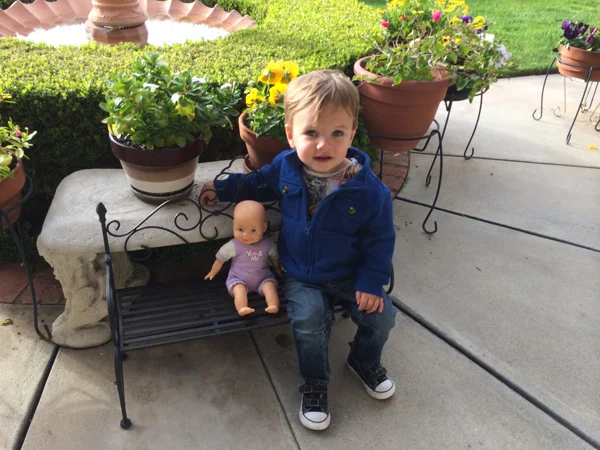Piaget’s Theory: Swiss biologist and psychologist Jean Piaget (1896-1980) observed his children (and their process of making sense of the world around them), and eventually developed a four-stage model of how the mind processes new information encountered. He posited that children progress through 4 stages and that they all do so in the same order. (Learning Theories, 56)
Each new stage represents a fundamental shift in how the child thinks and understands the world. (Hockenbury, 368) Piaget believed that it is of primary importance to nurture and guide children on the journey (through the four stages), giving them the freedom to experiment and explore on their own, in a very individual, trial-and-error manner. (Collin, 264) Includes 'concentration theory' - the tendency to focus, or center, on only one aspect of a situation and ignore other important aspects of the situation; 'conservation theory' - the understanding that two equal quantities remain equal even though the form or appearance is rearranged, as long as nothing is added or subtracted; 'egocentrism theory' - the inability to take another person’s perspective or point of view; and 'irreversibility theory' - the inability to mentally reverse a sequence of events or logical operations (Hockenbury, 370)
Piaget’s Stages: the progression of cognitive development (through the four stages) occurs as a continuous, gradual process. (Hockenbury, 368) Editor's note - stages listed by age.
Sensorimotor Stage: birth to 2 years of age. Babies learn about the world through touch and their other senses. (Collin, 266) Infants acquire knowledge about the world through actions that allow them to directly experience and manipulate objects. (Hockenbury, 369) The infant builds an understanding of himself or herself and reality (and how things work) through interactions with the "environment." It is able to differentiate between itself and other objects. Learning takes place via assimilation (the organization of information and absorbing it into existing "schema"), and accommodation (when an object cannot be assimilated and the schemata have to be modified to include the object. (Learning Theories, 56)
Preoperational Stage: age 2 to age 7. Children begin to arrange objects logically. (Collin, 266) Characterized by increasing use of symbols and prelogical thought processes. (Hockenbury, 369) The child is not yet able to conceptualize abstractly and needs concrete physical situations. Objects are classified in simple ways, especially by important features. (Learning Theories, 56)
Symbolic Thought: the ability to use words, images, and symbols to represent the world. (Hockenbury, 368)
Concrete Operational Stage: age 7 to adolescence. Children learn that quantities can take different forms. (Collin, 266) Characterized by the ability to think logically about concrete objects and situations. (Hockenbury, 371) As physical experience accumulates, accommodation is increased. The child begins to think abstractly. (Learning Theories, 56)
Formal Operational Stage: adolescence through adulthood. Verbal reasoning and hypothetical thinking. (Collin, 266) Characterized by the ability to think logically about abstract principles and hypothetical situations. (Hockenbury, 371) Cognition reaches its final form. By this stage, the person no longer requires concrete objects to make rational judgements. He or she is capable of deductive and hypothetical reasoning. His or her ability for abstract thinking is very similar to an adult. (Learning Theories, 56)
